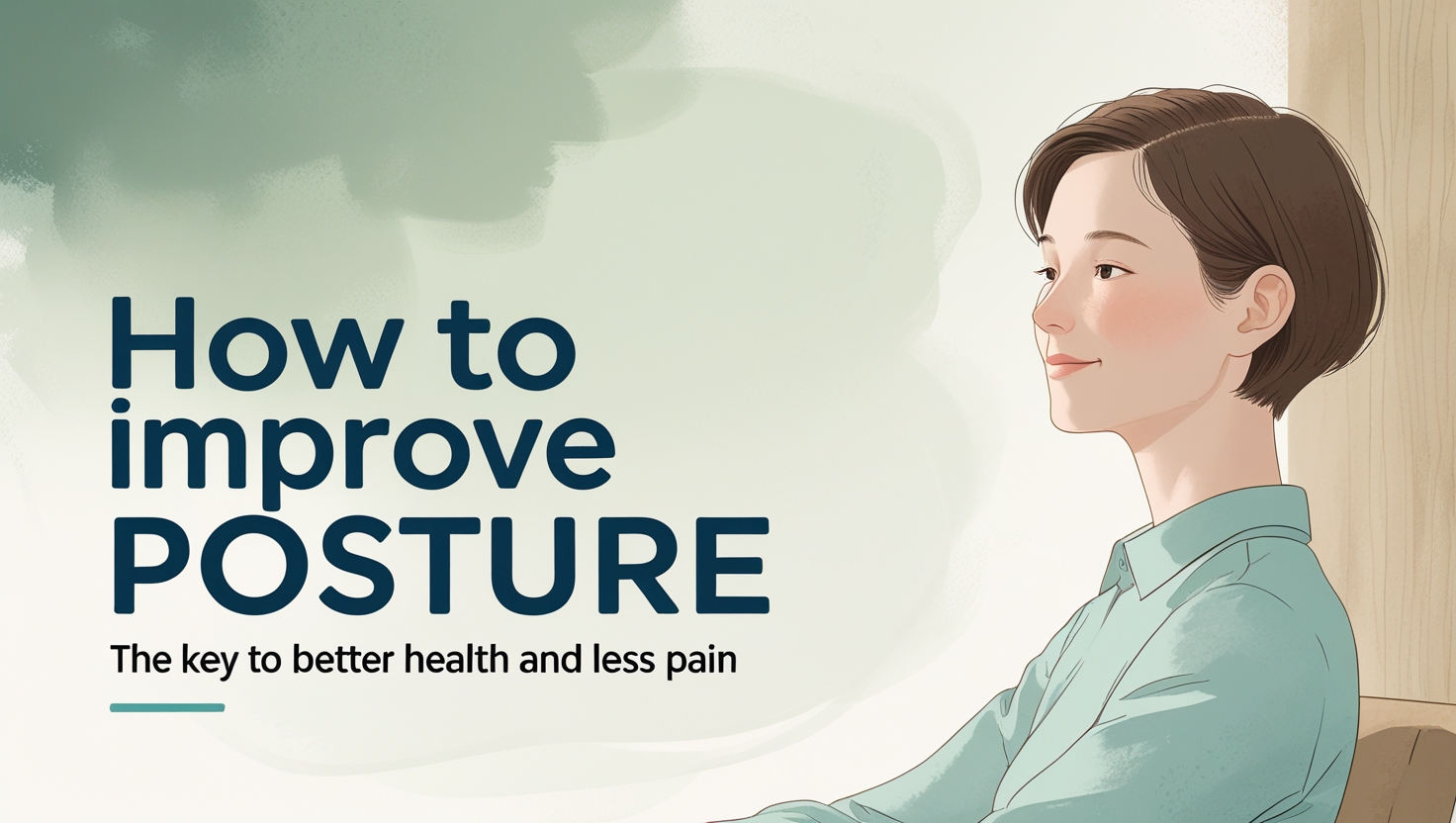Good posture isn’t just about standing up straight—it’s a key part of staying healthy and pain-free. Whether you’re sitting at a desk, walking, or sleeping, the way you hold your body affects how you feel throughout the day. Poor posture can lead to back pain, headaches, fatigue, and even problems with breathing or digestion. The good news? Improving your posture is simple, and the benefits can be life-changing.
What Is Good Posture?
Posture is the way you position your body when sitting, standing, or lying down. Good posture means your body is aligned properly—your shoulders are back, your spine is straight, and your muscles are balanced and supported.
When standing, your ears should line up with your shoulders, your shoulders should be over your hips, and your hips should be over your knees and ankles. When sitting, your feet should be flat on the floor, your knees at a right angle, and your back supported by the chair.
Why Posture Matters
Many people don’t think about their posture until they start to feel pain. But posture affects more than just your back. Here’s how good posture improves your overall health:
-
Reduces back, neck, and shoulder pain
-
Decreases headaches caused by tension
-
Improves breathing by allowing your lungs to fully expand
-
Boosts energy levels by reducing muscle strain
-
Supports healthy digestion
-
Improves confidence and body language
Common Causes of Poor Posture
Modern life often makes it hard to maintain good posture. Here are some habits that lead to poor alignment:
-
Sitting for long hours at a desk or in front of a screen
-
Slouching while using a phone or tablet (“tech neck”)
-
Wearing high heels often
-
Weak core or back muscles
-
Lack of movement or stretching throughout the day
Luckily, there are easy ways to correct these issues and build better habits.
How to Improve Your Posture
Here are some simple, practical steps you can take every day to improve your posture and reduce pain:
1. Be Aware of Your Posture
The first step is simply noticing how you hold your body. Do you tend to slouch when you’re tired? Lean forward while looking at your phone? Start checking in with yourself during the day and gently correcting your position.
2. Adjust Your Workstation
If you sit at a desk for most of the day, your workspace should support good posture:
-
Keep your screen at eye level
-
Use a chair with good back support
-
Keep your feet flat on the floor
-
Position your keyboard and mouse so your elbows are at your sides
Even better—consider using a standing desk or alternating between sitting and standing.
3. Strengthen Your Core
Your core muscles—abs, back, and hips—play a big role in posture. Weak core muscles can lead to slouching and back pain. Exercises like planks, bridges, and gentle yoga can help build a strong foundation.
4. Stretch Tight Muscles
Tight muscles pull your body out of alignment. Stretch your neck, shoulders, hips, and hamstrings daily to stay flexible and balanced. Try a few minutes of stretching in the morning or before bed to reduce tension.
5. Use a Posture Reminder
There are wearable devices and mobile apps that gently remind you to sit up straight or move around. Even a sticky note on your monitor that says “POSTURE!” can be a helpful cue.
6. Practice Good Walking Posture
When you walk, keep your head up, shoulders back, and swing your arms naturally. Avoid looking down at your phone while walking, which can strain your neck and upper back.
7. Mind Your Posture While Sleeping
Your sleeping position matters too. Try sleeping on your back or side with a supportive pillow. Avoid sleeping on your stomach, which can twist your neck and spine.
When to Seek Help
If you’re experiencing constant pain, stiffness, or posture problems that don’t improve with self-care, it might be time to talk to a doctor or physical therapist. They can assess your posture and recommend stretches, exercises, or therapies tailored to your needs.
Final Thoughts
Improving your posture doesn’t require big changes. Small daily adjustments—like sitting up straight, moving more, and stretching regularly—can lead to less pain, better health, and more energy. Over time, good posture becomes a habit, not a chore.
So next time you catch yourself slouching, take a deep breath, roll your shoulders back, and stand tall. Your body will thank you.





